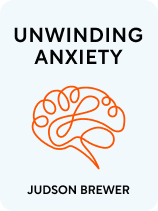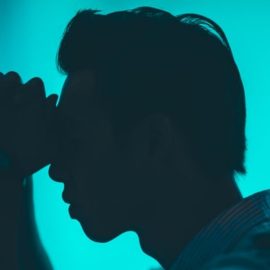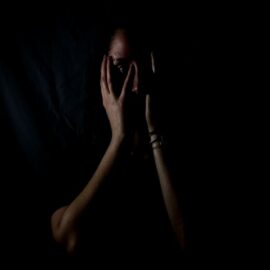

This article is an excerpt from the Shortform book guide to "Unwinding Anxiety" by Judson Brewer. Shortform has the world's best summaries and analyses of books you should be reading.
Like this article? Sign up for a free trial here.
What is anxiety? Why is anxiety a habit?
In Unwinding Anxiety, Dr. Judson Brewer explains that anxiety should be seen as a bad habit. This is because it creates a vicious cycle of behaviors that is difficult to break.
Continue reading to learn why anxiety is a habit.
The Habit of Anxiety
Brewer’s guidelines for overcoming anxiety are based on his reasoning that anxiety is a habit. To understand how to break the cycle of anxiety, we first have to understand how a habit loop works and how anxiety in particular spins off into other habit loops.
What Exactly Is Anxiety?
Brewer never formally defines anxiety—in fact, he argues that it’s hard to define and that you might not even realize you’re experiencing it. That’s because it can show up with explicit symptoms like worrying, a racing heart, jittery sensations, or panic attacks—but it can also manifest as seemingly unrelated physical complaints like stomachaches or as behavioral issues like overworking. But still, it seems worth knowing exactly what we mean by anxiety before we set about trying to treat it.
In Emotional Intelligence, author and psychologist Daniel Goleman offers a more in-depth definition of anxiety that might help us here. According to Goleman, anxiety is chronic worrying—and while the point of worry is to help us anticipate problems, in anxiety, the worry spins out of control and we either worry about everything or about nothing in particular. (As we’ll see, this definition lines up nicely with Brewer’s description of anxiety as a habit loop.)
Goleman says that anxiety is generally either cognitive (consisting mostly of worrying thoughts) or somatic (consisting mostly of bodily symptoms). He says that chronic anxiety tends to be fear-based (meaning you fixate on a specific situation), obsession-based (meaning you fixate on preventing certain situations), or panic-based (meaning you have panic attacks—episodes where you think you’re dying and experience symptoms similar to those of a heart attack).
How Habits Form
According to Brewer, our brains rely on a basic behavioral cycle to learn. The cycle consists of three parts:
- A trigger that prompts us to respond.
- A behavior performed in response to the cue.
- A result that gives us feedback (reward or consequence) in response to our behavior.
If the result is positive, we learn to repeat the behavior. If it’s negative, we learn to avoid it. (Shortform note: To make Brewer’s logic as clear as possible, when we give examples of these loops in this section, we’ll explicitly spell out what lesson each loop teaches us.)
On the most fundamental level, this cycle is a survival tool. When we feel hunger (cue), eat food (behavior), and feel good (result), we learn how to meet a basic survival need. Conversely, when an environmental stimulus sparks fear and an associated survival response (flee, fight, or freeze) and we survive the situation, we learn to use that survival response the next time we encounter that stimulus. Fear is a very powerful motivator for keeping us alive—a fact that, as we’ll see, works against us in the case of anxiety.
How Anxiety Becomes a Habit
Brewer says that whereas all organisms exhibit some form of the above behavioral cycle, the human brain has special adaptations that allow for more advanced learning techniques. In particular, the prefrontal cortex (PFC) allows us to generalize and make predictions about future situations based on stimuli we’ve already encountered. This allows us to plan for future dangers—a useful survival tool indeed.
Unfortunately, he says, the PFC keeps doing its job whether or not it has the information it needs. When we feel fear but lack adequate (or accurate) information, we end up with anxiety. In other words, anxiety is what happens when the PFC tries to plan ahead for danger, but in the absence of information, it starts making things up (“What if this? What about that?”).
Brewer also says that having too much information is just as bad as not having enough. As a result, the contemporary world has made it even easier to be anxious: With the internet at our fingertips, we easily get overwhelmed by the high volume (and often low quality) of information, which only makes anxiety worse—when the PFC has too much information to deal with, it focuses on the scariest and most sensational details.
To see how anxiety works in practice, here’s a simple example of how the basic survival behavior loop is supposed to work:
- Trigger: You’re hiking in the woods and see a bear ahead. You’re afraid of getting eaten.
- Behavior: You carefully leave the area before the bear notices you.
- Result: You don’t get eaten by the bear.
- Lesson: You learn that avoiding bears keeps you from being eaten.
However, when we sense (or simply suspect) danger but we don’t have enough information or can’t find a relevant action to alleviate the danger, the PFC makes us start to worry—to mull over all the possibilities, what-ifs, and worse-case scenarios we can imagine. Then the behavior loop looks like this:
- Trigger: You have an important review coming up at work. You’re afraid of getting a bad evaluation.
- Behavior: You can’t do anything to change or avoid the review, so you worry.
- Result: You feel anxiety.
- Lesson: You learn that performance reviews cause anxiety. The PFC might even generalize this lesson so that you learn that your job as a whole causes anxiety, or that work in general causes anxiety.

———End of Preview———
Like what you just read? Read the rest of the world's best book summary and analysis of Judson Brewer's "Unwinding Anxiety" at Shortform.
Here's what you'll find in our full Unwinding Anxiety summary:
- How to recognize and counteract anxiety with mindfulness
- Why anxiety becomes is toxic if left untreated
- A three-step method for treating anxiety






